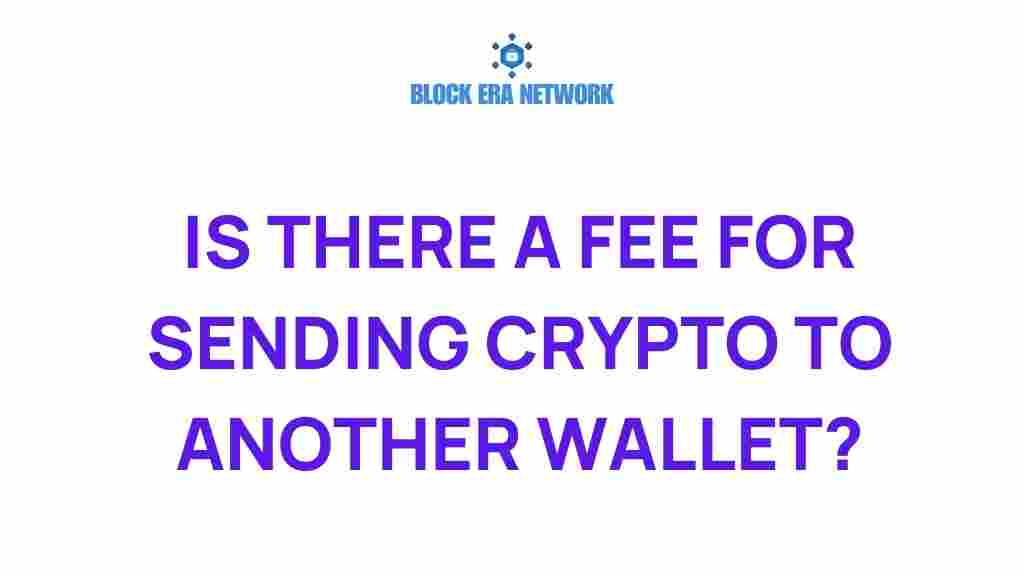Unraveling the Mystery: Are There Fees for Sending Crypto?
In the ever-evolving world of digital finance, cryptocurrency has emerged as a revolutionary force. However, as more individuals and businesses adopt this innovative form of currency, questions about crypto fees, especially related to wallet transfers, are becoming increasingly common. In this article, we will explore the intricacies of transaction costs associated with sending crypto, how blockchains operate in relation to these fees, and what users can expect when engaging in peer-to-peer transactions.
Understanding Crypto Fees
Before diving into the specifics of sending crypto, it is essential to understand what crypto fees are. These fees are charges incurred when transferring cryptocurrency from one digital wallet to another. They are an integral part of the blockchain ecosystem and serve various purposes:
- Transaction Validation: Miners or validators require compensation for processing and confirming transactions on the blockchain.
- Network Congestion: During peak times, higher fees can prioritize your transaction over others.
- Wallet Provider Fees: Some wallets may charge additional fees for transactions.
Now that we have a foundational understanding of crypto fees, let’s delve deeper into the specifics of sending crypto and the associated costs.
How Are Crypto Fees Determined?
The fees for sending crypto can vary significantly based on several factors:
- Network Fees: Each blockchain has its own fee structure. For instance, Bitcoin and Ethereum have different fee mechanisms based on their respective networks.
- Transaction Size: Fees can be calculated based on the size of the transaction data in kilobytes. Larger transactions will generally incur higher fees.
- Market Demand: During times of high demand, users must pay higher fees to ensure their transactions are processed quickly.
Steps to Send Crypto and Understand Fees
Sending crypto involves several steps, each of which may affect your transaction costs. Here’s a step-by-step guide:
1. Choose a Digital Wallet
The first step in sending crypto is selecting a reliable digital wallet. There are many options available, including:
- Hot Wallets: Online wallets that are user-friendly but may have higher crypto fees.
- Cold Wallets: Offline wallets that offer enhanced security but might not provide immediate transaction capabilities.
2. Check Current Network Fees
Before sending crypto, check the current network fees. Many wallets provide real-time data on transaction costs. Websites like Ethereum Gas Station and Blockchair can help you gauge the right time to send your cryptocurrency.
3. Initiate the Transfer
Once you’ve chosen your wallet and assessed the fees, you can initiate the transfer. Input the recipient’s wallet address, select the amount, and review the associated fees before confirming the transaction.
4. Confirm the Transaction
After sending, monitor the transaction status through your wallet interface or a blockchain explorer. This will provide real-time updates on your transaction and confirmation status.
Common Issues and Troubleshooting Tips
1. Transaction Delays
If your transaction is taking too long, it could be due to low fees. Consider the following:
- Check the current average fees on the network.
- If your fee is too low, you may need to wait until the network becomes less congested.
- Some wallets allow you to increase the fee post-submission, which can speed up the process.
2. Incorrect Wallet Address
Double-check the recipient’s wallet address before sending. Sending crypto to an incorrect address can result in permanent loss of funds. Always confirm the address and, if possible, send a small test amount first.
3. High Fees During Peak Times
If you notice exorbitant fees, consider waiting for less busy times to send your crypto. Monitoring transaction fees can save you money.
Conclusion
Understanding crypto fees is crucial for anyone looking to engage in the world of digital currency. By knowing how fees are determined, the steps to send crypto, and common troubleshooting tips, users can navigate the blockchain landscape more effectively. Always remember to stay informed about current market conditions, network fees, and the capabilities of your chosen digital wallet. With this knowledge, you can optimize your wallet transfers and minimize transaction costs while enjoying the benefits of cryptocurrency and peer-to-peer transactions.
For more insights on cryptocurrency and best practices, explore our resources or visit CoinMarketCap for real-time data and updates.
This article is in the category Cryptocurrency Insights and created by Block Era Network Team

1 thought on “Unraveling the Mystery: Are There Fees for Sending Crypto?”